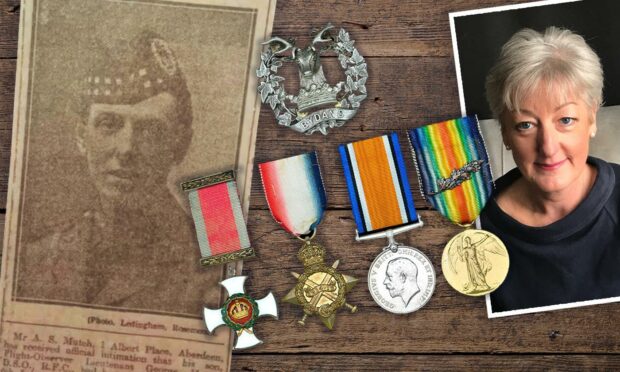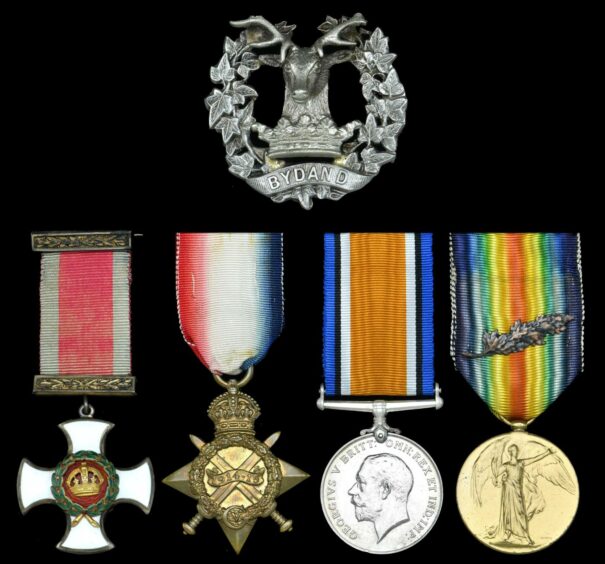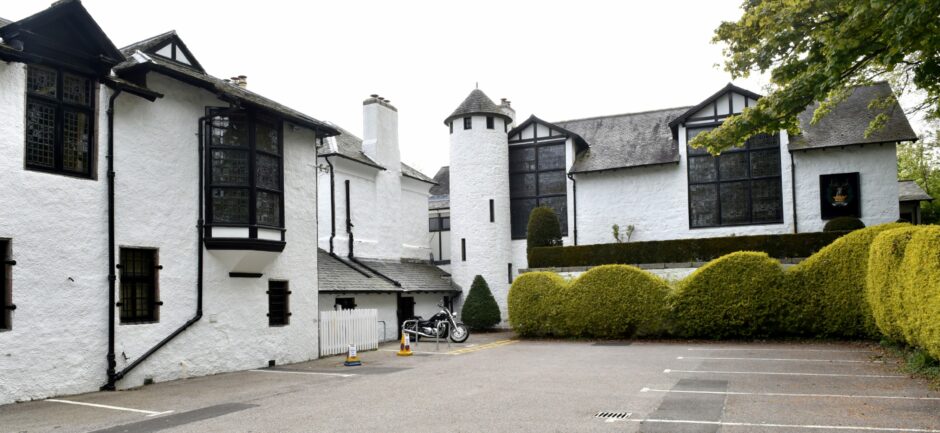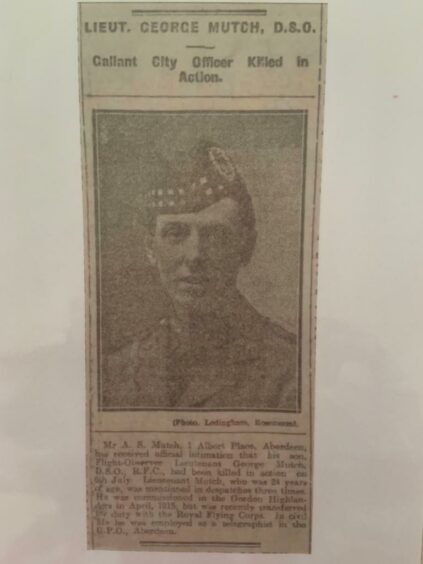Medals won by a distinguished Aberdeen war hero before his plane was shot down in 1917 will be donated to the Gordon Highlanders Museum, after his great-niece bought them from a collector.
Among the awards given to Lieutenant George Mutch was the Distinguished Service Order, after a dramatic raid in the face of machine-gun fire that ended with brutal hand-to-hand combat in the German trenches.
The medal, which was not normally awarded to soldiers of his rank, was pinned to his chest by King George V at Buckingham Palace.
Less than three months later, 24-year-old Lieutenant Mutch was killed when German ace Kurt Wolff – a protege of Manfred Von Richthofen, the Red Baron – shot his aircraft down over France.
Since then, the whereabouts of his honours became a mystery for his family – until the end of 2021.
A chance discovery
Gill Brisley became interested in her great-uncle’s story after her mum made a throwaway comment about her own mother’s brother, who had died in the war.
All she knew was George’s name. She did not even know the conflict where he had been killed, guessing it was the Second World War.
A search on the Commonwealth War Graves site revealed he had in fact fought in the First World War, starting as a Gordon Highlander before transferring to the Royal Flying Corps.
Mrs Brisley and her husband were able to find out a little more about Lieutenant Mutch by contacting the Kew Gardens archives and the Gordon Highlanders, but after that, she saw nothing new for years.
Then, she said: “For some bizarre reason, at the end of last year I decided to put his name into Google.
“Quite honestly, I thought there’s nothing new going to come up now, 105 years down the line.
“There was an article about the fact that his medals had just sold at auction in March 2020, at an auction house in London. I thought, nothing ventured nothing gained, so I contacted the auction house.”
After a lengthy correspondence, she was finally told that the collector who bought the medals was willing to sell them to her – although, due to the amount that was paid at the auction and an increase in value, it would cost her £5,500.
Mrs Brisley, who was born in Kirkcaldy but now lives on the outskirts of London, recalled: “I said, ‘Just give me a little bit of time to think about it,’ because I had put it to bed that it wasn’t going to happen.
“Then I thought, you know what, it’s a once-in-a-lifetime. They’re never going to come my way again ever.
“And I care. I never knew him, but I care about him and the sacrifice that he made, and I thought it’s important to do the right thing, so I bought them for £5,500.
“And I will donate them to the museum, because they will take care of them.”
Who was George Mutch?
Born in 1892, George Mutch spent his early years with his parents Alexander and Jessie on Albert Place in Aberdeen.
He joined the army in 1912, and after the outbreak of the First World War he was commissioned Second Lieutenant in the Gordon Highlanders – and later promoted to Lieutenant during the devastating Battle of the Somme in 1916.
On January 29 1917, he and his men put on white smocks and white helmets to disguise themselves against the snow on No Man’s Land, and charged towards the German machine guns.
The enemy suffered more than 50 casualties, with 17 taken prisoner and a number of gun emplacements being destroyed. Two officers and four men on the British side were killed.
For his gallantry in leading ‘B’ Company during the extraordinary raid, Lieutenant Mutch was awarded the DSO and was described as a “magnificent example to his men”.
His transfer to the Royal Flying Corps came shortly after, and when he died on July 6, he had his Glengarry hat and a sprig of heather in his pocket.
He is buried at the Railway Dugouts Burial Ground (Transport Farm) just outside of Ypres in Belgium.
Mrs Brisley said: “I’ve got the medals in front of me now, and looking at them I don’t think they’re things of exquisite beauty and I want to display them.
“I don’t get that from them, it’s the story behind them. I gave £5,500, which is not insignificant, but he gave his life, and so did many others.
“I think it’s important that he’s remembered, and the sacrifices he made are remembered.”



